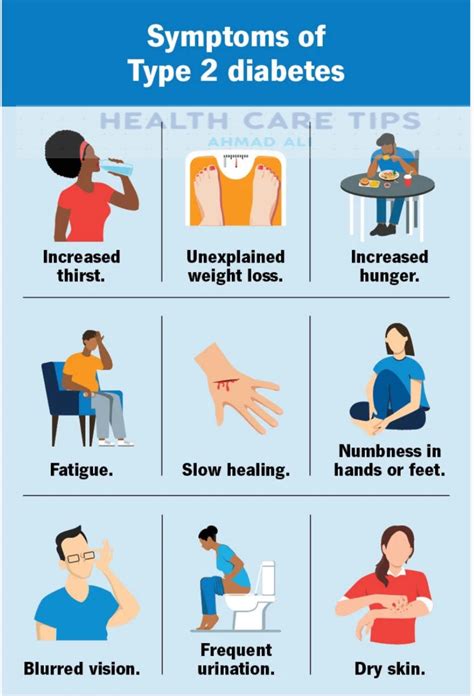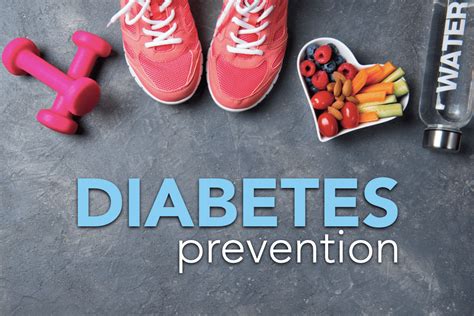Type 2 diabetes is a chronic health condition that affects the way the body processes blood sugar, also known as glucose. It is a complex condition that can have serious consequences if left untreated or poorly managed. The importance of understanding type 2 diabetes cannot be overstated, as it is a leading cause of death and disability worldwide. In this article, we will delve into the world of type 2 diabetes, exploring its definition, causes, symptoms, diagnosis, and treatment options.
The prevalence of type 2 diabetes has been increasing at an alarming rate over the past few decades, with millions of people worldwide living with the condition. This increase is largely due to factors such as obesity, physical inactivity, and an unhealthy diet. As a result, it is essential to understand the definition of type 2 diabetes and how it affects the body. By doing so, individuals can take the necessary steps to prevent or manage the condition, reducing the risk of complications and improving overall health.
Type 2 diabetes is a metabolic disorder that is characterized by high blood sugar levels, which can lead to a range of health problems if left untreated. The condition is often associated with insulin resistance, where the body's cells become less responsive to insulin, a hormone produced by the pancreas that regulates blood sugar levels. As a result, the body produces more insulin to compensate, leading to a range of complications, including heart disease, kidney damage, and nerve damage.
What is Type 2 Diabetes?
Type 2 diabetes is a complex condition that is influenced by a combination of genetic and environmental factors. It is characterized by high blood sugar levels, which can lead to a range of health problems, including heart disease, kidney damage, and nerve damage. The condition is often associated with insulin resistance, where the body's cells become less responsive to insulin, a hormone produced by the pancreas that regulates blood sugar levels.
Causes of Type 2 Diabetes
The causes of type 2 diabetes are complex and multifaceted. Some of the main risk factors include:
* Obesity: Being overweight or obese is a major risk factor for type 2 diabetes, as excess body fat can lead to insulin resistance.
* Physical inactivity: A sedentary lifestyle can increase the risk of type 2 diabetes, as regular physical activity helps to regulate blood sugar levels.
* Unhealthy diet: A diet high in sugar, salt, and unhealthy fats can increase the risk of type 2 diabetes.
* Family history: Having a family history of type 2 diabetes can increase an individual's risk of developing the condition.
* Age: The risk of type 2 diabetes increases with age, with most cases occurring in people over the age of 45.
Symptoms of Type 2 Diabetes
The symptoms of type 2 diabetes can vary from person to person, but common signs include:
* Increased thirst and urination: As the body tries to get rid of excess glucose, individuals may experience increased thirst and urination.
* Fatigue: High blood sugar levels can cause fatigue, as the body's cells are not getting the energy they need.
* Blurred vision: High blood sugar levels can cause blurred vision, as the lens in the eye becomes swollen.
* Slow healing of cuts and wounds: High blood sugar levels can affect the body's ability to heal wounds, making it harder for cuts and wounds to heal.
* Tingling or numbness in the hands and feet: High blood sugar levels can damage the nerves, causing tingling or numbness in the hands and feet.
Diagnosis of Type 2 Diabetes
The diagnosis of type 2 diabetes typically involves a combination of physical examination, medical history, and laboratory tests. Some of the common tests used to diagnose type 2 diabetes include:
* Fasting plasma glucose test: This test measures the level of glucose in the blood after an overnight fast.
* Oral glucose tolerance test: This test measures the level of glucose in the blood after consuming a sugary drink.
* Hemoglobin A1c test: This test measures the average level of glucose in the blood over the past 2-3 months.
Treatment Options for Type 2 Diabetes
The treatment of type 2 diabetes typically involves a combination of lifestyle changes and medication. Some of the common treatment options include:
* Healthy diet: Eating a healthy, balanced diet that is low in sugar, salt, and unhealthy fats can help to regulate blood sugar levels.
* Regular physical activity: Engaging in regular physical activity, such as walking or cycling, can help to improve insulin sensitivity and reduce blood sugar levels.
* Medication: Medications such as metformin, sulfonylureas, and pioglitazone can help to regulate blood sugar levels and improve insulin sensitivity.
* Insulin therapy: In some cases, individuals with type 2 diabetes may need to use insulin therapy to regulate their blood sugar levels.
Complications of Type 2 Diabetes
If left untreated or poorly managed, type 2 diabetes can lead to a range of serious complications, including:
* Heart disease: High blood sugar levels can increase the risk of heart disease, including heart attacks, strokes, and high blood pressure.
* Kidney damage: High blood sugar levels can damage the kidneys, leading to kidney failure and the need for dialysis or a kidney transplant.
* Nerve damage: High blood sugar levels can damage the nerves, leading to numbness, tingling, and pain in the hands and feet.
* Blindness: High blood sugar levels can damage the eyes, leading to blindness and vision loss.
Prevention of Type 2 Diabetes
The prevention of type 2 diabetes is critical, as it can help to reduce the risk of complications and improve overall health. Some of the ways to prevent type 2 diabetes include:
* Maintaining a healthy weight: Being overweight or obese is a major risk factor for type 2 diabetes, so maintaining a healthy weight through a combination of diet and exercise can help to reduce the risk.
* Engaging in regular physical activity: Regular physical activity can help to improve insulin sensitivity and reduce the risk of type 2 diabetes.
* Eating a healthy diet: Eating a healthy, balanced diet that is low in sugar, salt, and unhealthy fats can help to regulate blood sugar levels and reduce the risk of type 2 diabetes.
* Getting enough sleep: Getting enough sleep is essential for overall health, and can help to reduce the risk of type 2 diabetes.
Conclusion and Next Steps
In conclusion, type 2 diabetes is a complex and multifaceted condition that requires a comprehensive approach to prevention and management. By understanding the causes, symptoms, diagnosis, and treatment options for type 2 diabetes, individuals can take the necessary steps to reduce their risk and improve their overall health. If you are concerned about type 2 diabetes, it is essential to speak with a healthcare professional who can provide personalized advice and guidance.
We invite you to share your thoughts and experiences with type 2 diabetes in the comments below. Have you or a loved one been diagnosed with type 2 diabetes? What steps have you taken to manage the condition? Share your story and help to raise awareness about this important health issue.
What are the main risk factors for type 2 diabetes?
+
The main risk factors for type 2 diabetes include obesity, physical inactivity, unhealthy diet, family history, and age.
What are the common symptoms of type 2 diabetes?
+
The common symptoms of type 2 diabetes include increased thirst and urination, fatigue, blurred vision, slow healing of cuts and wounds, and tingling or numbness in the hands and feet.
How is type 2 diabetes diagnosed?
+
Type 2 diabetes is typically diagnosed through a combination of physical examination, medical history, and laboratory tests, including fasting plasma glucose test, oral glucose tolerance test, and hemoglobin A1c test.
Additional Resources
For more information on type 2 diabetes, we recommend visiting the following resources:
* American Diabetes Association: This website provides a wealth of information on type 2 diabetes, including causes, symptoms, diagnosis, and treatment options.
* Centers for Disease Control and Prevention: This website provides information on the prevention and management of type 2 diabetes, including healthy eating and physical activity.
* National Institute of Diabetes and Digestive and Kidney Diseases: This website provides information on the latest research and treatments for type 2 diabetes, including clinical trials and new medications.
Final Thoughts
In final thoughts, type 2 diabetes is a complex and multifaceted condition that requires a comprehensive approach to prevention and management. By understanding the causes, symptoms, diagnosis, and treatment options for type 2 diabetes, individuals can take the necessary steps to reduce their risk and improve their overall health. We hope that this article has provided you with the information and resources you need to take control of your health and reduce your risk of type 2 diabetes. Remember to always consult with a healthcare professional for personalized advice and guidance.
Future Directions
As we look to the future, it is clear that type 2 diabetes will continue to be a major public health concern. However, by working together to raise awareness and promote prevention and management, we can reduce the risk of complications and improve overall health. Some potential future directions for type 2 diabetes research and treatment include:
* Development of new medications and therapies: Researchers are continually working to develop new medications and therapies that can help to regulate blood sugar levels and improve insulin sensitivity.
* Advances in diabetes technology: Advances in diabetes technology, such as continuous glucose monitoring and insulin pumps, can help to improve the management of type 2 diabetes and reduce the risk of complications.
* Increased focus on prevention: By increasing our focus on prevention, we can reduce the risk of type 2 diabetes and improve overall health.
Call to Action
We invite you to take action and join the fight against type 2 diabetes. Whether you are at risk of developing the condition or are already living with it, there are steps you can take to reduce your risk and improve your overall health. Some potential actions include:
* Speaking with a healthcare professional: If you are concerned about type 2 diabetes, it is essential to speak with a healthcare professional who can provide personalized advice and guidance.
* Making lifestyle changes: Making lifestyle changes, such as eating a healthy diet and engaging in regular physical activity, can help to reduce the risk of type 2 diabetes and improve overall health.
* Getting involved in your community: Getting involved in your community and promoting awareness about type 2 diabetes can help to reduce the risk of complications and improve overall health.








